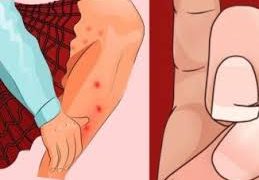WHO sees ovarian threatening development as one of the most hazardous oncopathologies of the female regenerative system. The disorder is the second most ordinary after carcinoma of the cervix. Regardless, it is a ton of more horrible examined, and ineffectually treatable. It is depicted by a strong course and a tendency to break faith. Diseases are distinguished in patients of different ages anyway are most ordinary in additional laid out women.
Clarifications behind the improvement of the disease
The instrument of the game plan of ovarian developments resembles the headway of oncopathologies of various organs. Impacted by a change, the course of cell division and passing is upset.
Undermining advancements begin to grow fiercely, dynamically displacing sound plans.
Reliably the purposes behind the start of psychotic changes have not been recognized. Experts are inclined to acknowledge that ovarian harmful development is hormonal, even more every now and again making in women with consistent disillusionments in the blend of synthetics of the regenerative system. Hence, the shortage of pregnancy, and work basically works on the likelihood of risk. For this present circumstance, ovulatory cycles are steady, causing accelerated recuperation of ovarian epithelial cells, which in the end actuates hazardous changes.
Also Read : 14 things your eyes are trying to tell you about your health
Other bet factors for ovarian infection include:
inborn innate changes (for example, prompted by Lynch condition);
early month to month cycle;
moved venereal sicknesses;
polycystic;
heaviness;
late menopause or work;
endometriosis;
tenacious bothering of the regenerative organs;
smoking;
irregular sexual conjunction;
living in a district with sad climate;
different early terminations.
The major get-together of patients not entirely set in stone to have ovarian harmful development in women developed 40-69 years who experience the evil impacts of vanity. The hereditary tendency to oncopathologies of the regenerative system basically extends the bet of making pathology.
Kinds of ovarian sickness
Malignant growths of this class are the more regularly uneven (fill in one ovary), and now and again – complementary.
Improvements are isolated into:
epithelial – are outlined in the epithelium covering the outer or inside surface of organs;
stromal – create from cells of a specific connective tissue (stroma), responsible for the mix of estrogens, androgens, and progestins. These neoplasms address around 7% of the total number of cases of examined ovarian harmful development. They are slow-growing, more clear to recognize in the first place stages;
malignant growth causing – are formed from fundamental, energetic cells, are brought into any tissues of organs. They are phenomenal, generally speaking, in young children.
Up to 90% of ovarian illnesses are of the epithelial kind. They are difficult to examine and treat.
There are a couple histological kinds of such developments:
mucinous;
endometrioid;
complex;
clear cell;
serous;
mixed;
carcinomas;
Brener neoplasms.
By starting, malignant growths are:
fundamental – are outlined clearly from the cells of the ovaries;
discretionary – are reestablished from innocuous turns of events (pimples);
metastatic – show up due to the introduction of changed cells with a blood or lymph stream from various bits of the body.
Neoplasms of the last grouping are the most dangerous, portrayed by quick turn of events, and fast spread to bordering organs.
Periods of disease improvement
Like various types of dangerous development, ovarian tumors go through four groundbreaking stages:
I – the neoplasm is restricted in one organ, rarely begins to spread to the pair;
II – one ovary is completely affected, the cycle connects with the uterus, tubes;
III – sickness cells are viewed as in the inguinal, retroperitoneal lymph center points;
IV – metastasis is seen in internal organs far away from the fundamental fixation.
The past tissue danger is recognized, the more essential the chance of a patient recovering.
Brand name features
The gamble of ovarian illness is that in 75-80% of cases (according to WHO estimations) it is distinguished at this point at the period of powerful metastasis to far away organs and structures.
Symptoms of the starting stages are obscure, they indicate various ailments. Among them:
protruding;
torture in the lower mid-district;
progressive pee;
a vibe of weight in the stomach, satiety with a restricted amount of food;
sudden, unreasonable weight decrease.
As the development creates, the clinical picture of the pathology is recharged with such a lot of appearances as:
predictable fatigue;
heartburn;
decrease in working cutoff;
skin rash;
back torture;
ladylike inconsistencies;
muscle weakness;
blockage;
spinal torment;
bother during intercourse.
It is challenging to spread out pathology according to these traits. A complete evaluation is supposed to recognize the malignant growth cycle.
Diagnostics
A visit to a clinical association begins with an anamnesis, gynecological evaluation, and palpation of the pelvic organs. To recognize a disease, conclude its sort, limitation, level of progress, the patient is finished:
transvaginal ultrasound;
chest x-shaft;
X-beam;
general, biochemical blood tests;
mammography;
CT result of the mid-locale;
innate tests to recognize changes;
positron release tomography;
illustrative curettage of the uterine sorrow (it is thought to (expect endometrial dangerous development).
A blood test for the presence of the CA-125 development marker isn’t unequivocal, in this manner, it is even more regularly used not to recognize ovarian sickness at a starting stage, yet to screen the components during the therapy of the patient, to prevent loses the faith.
The last end is made exclusively after a biopsy with a histological evaluation of the biomaterial.
Treatment
The essential treatment for ovarian dangerous development is the cautious clearing of the malignant growth. Oncologists practice a couple of methods for intervention:
hard and fast hysterectomy – complete clearing of a woman’s conceptive organs;
cytoreduction – eliminating a piece of the neoplasm expecting chemotherapy is inadequate;
partial hysterectomy – ejection of the disease with the catch of incorporating tissues;
palliative operation – resection of a piece of an inoperable neoplasm, pointed not at treatment, yet rather at additional fostering the patient’s very own fulfillment.
The sort of mediation is picked by the going to specialist, considering the characteristics of a particular case, and the state of solidarity of the patient. The action is enhanced by chemotherapy.
She happens:
Also Read : 14 things your eyes are trying to tell you about your health
neoadjuvant – performed before resection to diminish the size of the neoplasm or when cautious mediation is immense;
adjuvant – is displayed for patients in the postoperative period to join the result, and hinder lose the faith.
If it is practical to perceive “target” cells in the development, chemotherapy is gotten together with assigned chemotherapy.
Hormonal therapy is genuine in the rehash of stromal tumors. Autonomously, it is rarely used on account of the low ampleness of the impact on hurtful cells.
Gauge
The supposition for ovarian harmful development, taking everything into account, is poor. This is in light of the fact that these neoplasms are the more regularly dissected in the later stages. Moreover, this sort of neoplasm is leaned to rehash.
Also Read : Early warning signs of brain cancer everyone should know
The five-year perseverance limit is overpowered by 10 to 80% of women, dependent upon the degree of spread of the malignant growth. Reliant upon the departure of each and every altered tissue, around 60% of patients recover.
Aversion
It is totally difficult to absolutely ensure against the improvement of ovarian harmful development. Regardless, to diminish the bet of a development, it is adequate to keep a couple of fundamental rules:
balance the eating routine;
do display;
stop smoking, mixed drinks;
safeguard the skin from brilliant radiation.
Young women whose immediate relations had ovarian threatening development need to circumspectly screen their prosperity. Go through typical gynecological evaluations. Yearly screenings are recommended for all women more than 40 years of age.






















